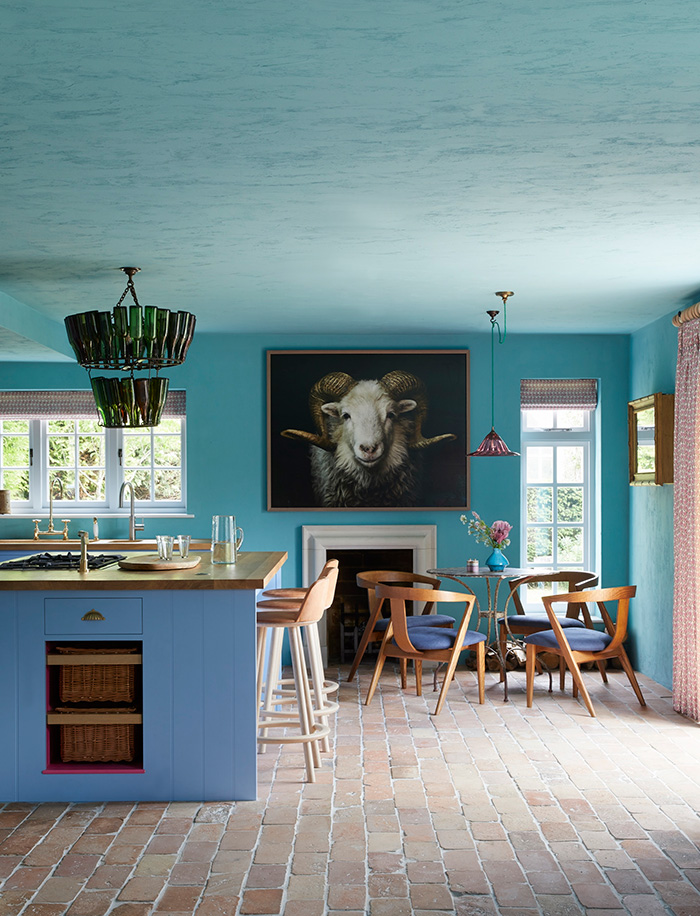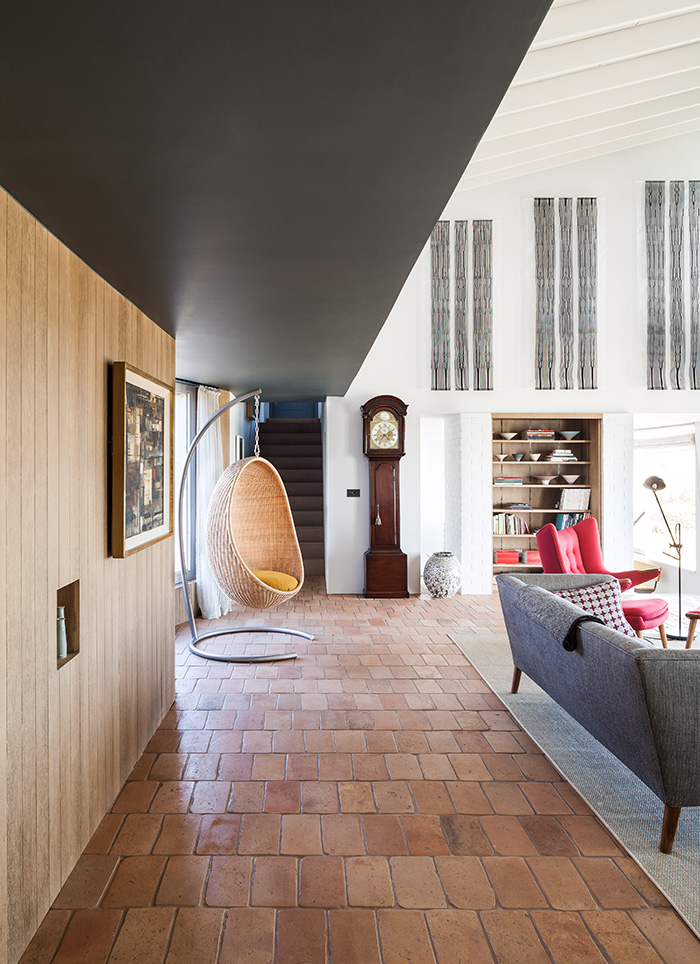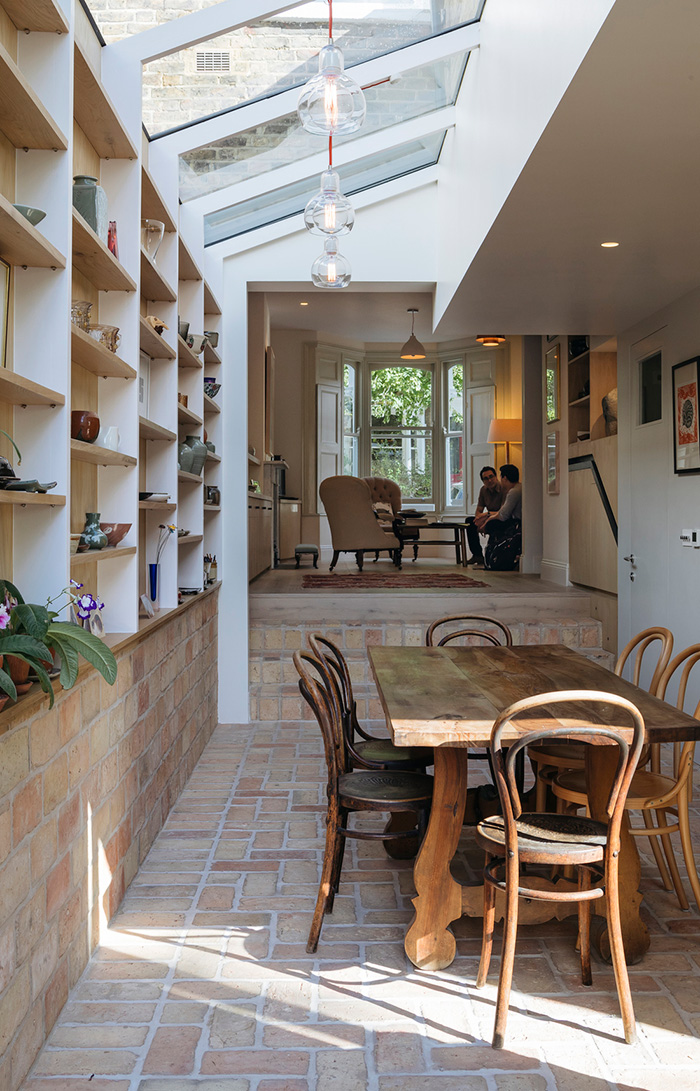Practical tips on using reclaimed brick tiles
lubelska.co.uk
Edward Howey, co-director of Lubelska, gives advice on creating beautiful flooring with vintage brick tiles
An independent, family-run business, Lubelska has more than 15 years’ experience in reclaimed flooring, including made-to-order reclaimed brick tiles. Their bricks are mostly sourced from farm buildings and outhouses in Eastern Europe, where the building is no longer in use and beyond repair, but the bricks are still in good condition. The salvaged bricks are then sliced into tiles.

Photography by Paul Massey, interior design by Ana Engelhorn
Why use reclaimed tiles?
The brick tiles are beautiful. They have a certain rusticity and are unique – they’ve been made by hand, 60 to 80 years ago, from clay made in different batches.
What rooms are these tiles suitable for?
Customers have used them all over their properties, from kitchens and hallways, to living rooms and utilities. The bricks have been fired at a very high temperature which makes them incredibly durable as flooring. They are frost-resistant too so can be used outdoors.

lubelska.co.uk
What should be considered first, before laying the tiles?
You need to make sure you have a hard surface that the tiles can be laid on, such as a floor that’s already tiled, or a cement floor. You might need a self-levelling compound to smooth out the floor surface before laying the tiles and you need to work out how much height you can give away. You’ll also need grout and adhesive. When measuring, bear in mind that you need to order 10 per cent extra for cuts and wastage.
Is this a DIY job?
We’ve had many customers who have done this themselves, helped by our extensive laying guidelines. If you were going to do a whole downstairs – a 100-square-metre floor – it’s a pretty big job, so you might need assistance. But if you were thinking of doing a 4-square-metre bathroom or a fire hearth, for instance, you could do it yourself.

lubelska.co.uk
What about the pattern?
You do need to think about the pattern. You could use a brick bond pattern, herringbone or a basket weave. I recommend people dry-lay the floor before bedding it down on to the adhesive, to decide which pattern they like best. Originally, they were used in country houses and manors, but they work just as well in contemporary settings as in period properties.
How should I care for the tiles?
The tiles do need to be sealed. The modern way of sealing is using a water-based sealer which keeps that natural, matt finish and helps the tiles become water-resistant, so any spillages can be wiped up and cleaned. I recommend using a good-quality sealer, which will last for 8 to 10 years. If you use a poor one, you’ll have to reseal every year.
WORDS: AMY BRATLEY
Before you go...
...fancy automatic entry to all future competitions?
Simply register online today for FREE and you will get:
Automatic entry to all current and future competitions.
Access to Reclaim Inspiration - an online visual pinboard for saving all your home and style inspiration.
A regular newsletter of inspiration, ideas and advice.

Save all your articles in one place
Become a Reclaim Member to save all your home and style inspiration. Simply login or register online today for FREE and you will get:
Automatic entry to all current and future competitions.
Access to Reclaim Inspiration - an online visual pinboard for saving all your home and style inspiration.
A regular newsletter of inspiration, ideas and advice.








